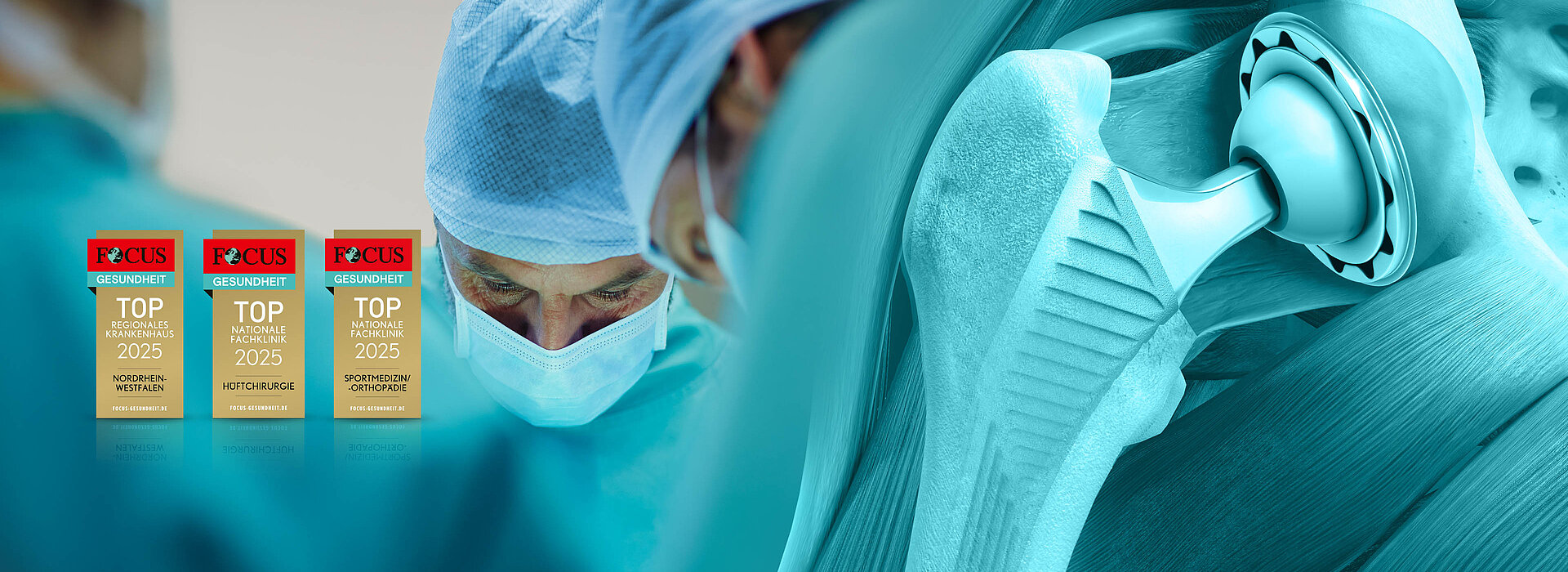Is your knee giving you a hard time? Walking on an uneven surface is particularly painful and stairs are unpleasant for you for fear of your knee slipping? The everyday stress to which the knee is exposed and the complex structure make the knee joint particularly susceptible to wear and tear (knee osteoarthritis). In the interests of the patient, the doctors at the Sportklinik Hellersen are committed to preserving your knee joint for as long as possible and restoring the structures in the event of injury. If this is no longer possible, the specialists at Endoprothetik Hellersen are there for you and will help you regain your mobility without pain. Head physician Dr. Joachim Hagenah and his team specialize in knee and hip prostheses and implant more than 850 artificial knee and hip joints and perform prosthesis replacement operations every year.
Causes of an artificial knee joint
Arthritis, the consequences of rheumatism, bone necrosis and post-traumatic changes can be the causes of an artificial knee joint. The extent of the joint wear and the condition of the ligaments and muscles that support the knee joint are decisive for the use of a knee prosthesis.
The sled prosthesis - when only part of the knee joint is affected
With knee prostheses, a distinction is made between a full prosthesis and a partial prosthesis - the so-called sled prosthesis. The sled prosthesis is often used when only part of the knee joint, usually the inside, is affected by wear and tear and needs to be replaced with an artificial joint. The prerequisite for the use of a sled prosthesis is that the opposite side does not yet have any advanced cartilage damage and the cruciate ligament is intact.
Full prosthesis for advanced cartilage damage
Sled prostheses account for around 10 to 15 percent of knee prosthesis operations. Full prostheses are implanted much more frequently at our specialist clinic. This is necessary if the outside of the knee joint is also damaged.
If the ligaments are also damaged, a pure surface replacement of the knee joint is not sufficient. In this case, coupled prostheses provide the necessary stability. Coupled prostheses consist of two stainless steel components for the upper and lower joint surfaces and a movable PET plastic. In contrast to non-coupled knee prostheses, the upper and lower parts of the prosthesis are connected to each other in a coupled prosthesis.
When will I be fit again after knee surgery?
The following applies to all three forms of knee prosthesis: partial weight-bearing of the knee is possible again after just a few days. At the patient's request, our specialists will also implant a pain catheter, which is removed four days after the knee operation.
The additional implantation of the pain catheter means that the joint can be moved much more quickly after the knee operation. The patient can stand up and put weight on their leg as early as the day after the operation. The faster movement supports healing and the good result.

Stefanie Baudis
Endoprosthetics secretariat
- Phone+49 2351 945-2221
- Fax+49 2351 945-2091
- sekretariat.hagenah@hellersen.de
Private outpatient clinic
Phone +49 2351 945-2221
Fax +49 2351 945-2091
sekretariat.hagenah@hellersen.de
Outpatient clinic
Phone +49 2351 945-2421
Fax +49 2351 945-2091
sekretariat.hagenah@hellersen.de








